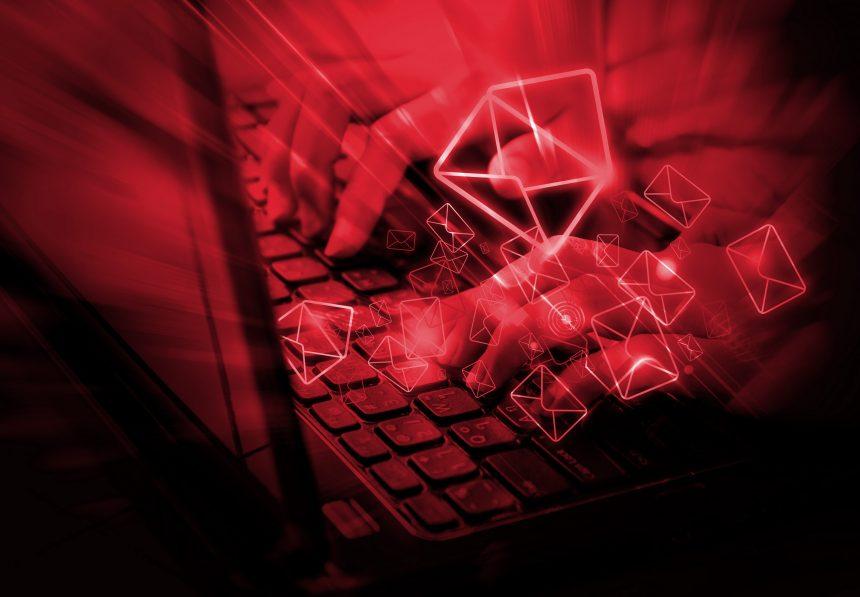In the ever-evolving landscape of cyber threats, malicious actors continue to employ deceptive tactics to compromise computer systems and steal sensitive information. One such threat, known as the “KASIKORNBANK Email Virus,” is a sophisticated malware-spreading email scam campaign that has been carefully designed to deceive recipients into compromising their devices. In this comprehensive guide, we will analyze this threat, provide insights into its modus operandi, and offer a detailed removal guide to help you safeguard your digital environment.
Understanding the “KASIKORNBANK Email Virus” Scam
The “KASIKORNBANK Email Virus” is a deceptive email that falsely claims to be from KASIKORNBANK PCL, a well-known financial institution. The email’s subject line reads “SWIFT MT103 Notification from KASIKORN BANK,” and it addresses the recipient as “Our Valued Client.” This is a deliberate attempt to create a sense of trust and importance, luring the recipient into a false sense of security.
The email contains two seemingly innocuous attachments, named “25-10-2023 MT103.doc” and “25-10-2023 MT103-2.doc” (although the names may vary). The attachments are described as representing “MT103: PAYMENT AD MT103 AND PAYMENT AD 2 MT103” and are deceptively labeled as “self-explanatory.” The scammer’s goal is to maintain an appearance of legitimacy and express gratitude for the recipient’s supposed choice of KASIKORNBANK PCL as their trusted bank.
The Threat Type and Payload
The “KASIKORNBANK Email Virus” is a multi-faceted threat that combines social engineering tactics with a notorious and highly sophisticated payload, known as Agent Tesla. Here’s a breakdown of the key elements:
- Threat Type: The email is part of a malware-spreading email spam campaign and combines elements of a Trojan, password-stealing virus, banking malware, and spyware.
- Payload: The malicious payload in this campaign is Agent Tesla, a remote access trojan (RAT). Agent Tesla is designed to infiltrate and compromise targeted computer systems, providing cybercriminals with unauthorized access to steal sensitive data, record keystrokes, capture screenshots, and monitor the victim’s activities.
How “KASIKORNBANK Email Virus” Infects Computers
In this deceptive email, the recipient encounters two visually identical attachments, often named “25-10-2023 MT103.doc” and “25-10-2023 MT103-2.doc” (or variations thereof). The danger lies in the consequence that if one of these files is opened and macros (editing) are enabled, it leads to the recipient’s computer becoming compromised and infected with Agent Tesla RAT.
Symptoms and Damage Caused by Agent Tesla
Agent Tesla is notorious for its stealthy nature, making it difficult to detect. Victims may not experience specific symptoms on their infected machines, but the potential damage is extensive. The RAT allows cybercriminals to steal passwords, banking information, and personal data, potentially leading to identity theft and further cybercrimes. Additionally, the victim’s computer can be added to a botnet, further expanding the attacker’s control.
Email Text and Attachments
For your reference, here’s the text of the “KASIKORNBANK Email Virus” email:
Subject: FWD: SWIFT MT103 Notification from KASIKORN BANK
To Our Valued Client
KASIKORNBANK PCL is pleased to attach a copy of MT103: PAYMENT AD MT103 AND PAYMENT AD 2 MT103, which is self-explanatory.
Thank you for choosing KASIKORNBANK PCL to be your trusted bank and giving us the opportunity to be of service. If you need any more information please do not hesitate to call your Trade Services Specialist.
Attachment(s): “25-10-2023 MT103.doc” and “25-10-2023 MT103-2.doc” (or similar)
Removing the Threat
If you have already opened the “KASIKORNBANK Email Virus” attachment, it’s essential to take immediate action to remove any potential malware infections. The following steps outline the removal process:
- Scan your Computer: Use legitimate antivirus software to scan your computer thoroughly for any infiltrated malware.
- Eliminate Malware: Once the scan is complete, remove any detected malware to ensure your system is clean.
Manual Removal Steps for “KASIKORNBANK Email Virus”
Removing the “KASIKORNBANK Email Virus” without using anti-malware software can be challenging, but it’s possible if you follow these manual removal steps. Keep in mind that manual removal might not be as comprehensive or effective as using dedicated anti-malware software, so exercise caution and consider using such software if you’re unsure about the process.
- Isolate the Infected Computer:
- Disconnect the infected computer from the internet and any other network connections to prevent the malware from communicating with its command and control servers.
- Backup Your Important Data:
- Before proceeding, back up any essential files and data to an external storage device. This precaution is vital in case of data loss during the removal process.
- Access Safe Mode:
- Reboot your computer in Safe Mode. This restricts the operation of certain processes, making it easier to remove malware. For Windows:
- Restart your computer.
- During the boot process, press the F8 key repeatedly until the Advanced Boot Options menu appears.
- Select “Safe Mode with Networking” using the arrow keys and hit Enter. For macOS:
- Restart your Mac.
- Hold down the Shift key until you see the Apple logo.
- Identify Malicious Processes:
- Open the Task Manager (Windows) or Activity Monitor (macOS) to identify any suspicious or unknown processes running in the background.
- Terminate these processes.
- Delete Malicious Files and Attachments:
- Navigate to the location where you saved the email attachments (“25-10-2023 MT103.doc” and “25-10-2023 MT103-2.doc” or similar names) and delete them.
- Check for any other suspicious files on your computer, especially in folders where malware often hides, like the Temp directory.
- Edit the Windows Registry (Windows only):
- Press Win + R to open the Run dialog.
- Type “regedit” and hit Enter to open the Windows Registry Editor.
- Backup your registry settings first: Click on “File” > “Export” and save the registry to a safe location.
- Navigate to the following registry keys and delete any suspicious entries:
- HKEY_CURRENT_USER\Software\Microsoft\Windows\CurrentVersion\Run
- HKEY_LOCAL_MACHINE\Software\Microsoft\Windows\CurrentVersion\Run
- Close the Registry Editor.
- Clear Browser Data:
- Open your web browsers and clear your browsing history, cache, and cookies to remove any traces of the malware.
- Reset Browser Settings:
- Reset your web browsers to their default settings to remove any malicious extensions or changes made by the malware.
- Restart Your Computer:
- Exit Safe Mode and restart your computer in normal mode.
- Update and Patch Software:
- Ensure your operating system, web browsers, and all software are up to date with the latest security patches to prevent future infections.
- Change Passwords:
- Change your passwords for online accounts, especially if you suspect any sensitive information may have been compromised.
- Regular Scanning:
- Even after manual removal, perform regular scans with updated anti-malware software to ensure your computer remains malware-free.
These manual removal steps can help you eliminate the “KASIKORNBANK Email Virus.” However, due to the complex nature of malware, it’s strongly recommended to use reliable anti-malware software to enhance your computer’s security and detect any residual threats.
By following these guidelines, you can effectively mitigate the threat posed by the “KASIKORNBANK Email Virus” and similar malicious campaigns. Remember that your online security is a shared responsibility, and your vigilance and proactive measures play a crucial role in maintaining a secure and protected digital environment. Stay informed, stay safe, and enjoy a safer online experience.
Avoiding “KASIKORNBANK Email Virus” and Similar Threats
To protect your computer and personal information from threats like the “KASIKORNBANK Email Virus” and similar scams, follow these proactive measures:
- Exercise Caution: Approach email attachments and links with heightened vigilance, especially if the sender’s identity is unclear or the email appears suspicious.
- Safe Browsing: Navigate websites with caution and avoid engaging with dubious links, pop-ups, or downloading files and programs from unverified sources.
- Keep Software Updated: Regularly update your operating system, web browsers, and software applications to ensure you have the latest security patches.
- Stay Informed: Stay informed about the latest developments in cybersecurity threats and phishing techniques to recognize potential risks.
Conclusion
In conclusion, the “KASIKORNBANK Email Virus” represents a sinister example of how cybercriminals employ deception to compromise computer systems and steal sensitive data. This multifaceted threat combines social engineering tactics with a powerful payload, Agent Tesla, to infiltrate and compromise victims’ computers. To protect yourself and your digital environment from such threats, it’s imperative to exercise vigilance, be cautious when interacting with email attachments and links, and keep your software up to date.
If you suspect that you may have fallen victim to this email scam, it’s crucial to act swiftly. Scanning your computer with legitimate antivirus software is the first step in identifying and removing any potential malware infections. This proactive approach will help ensure your system’s cleanliness and protect your data from unauthorized access.
Remember that cybersecurity is an ongoing effort, and staying informed about evolving threats is vital. By practicing safe online habits, you can significantly reduce the risk of encountering threats like the “KASIKORNBANK Email Virus.” Your proactive measures contribute to a safer and more secure digital experience, allowing you to browse the web with confidence. Stay vigilant, and stay safe.





